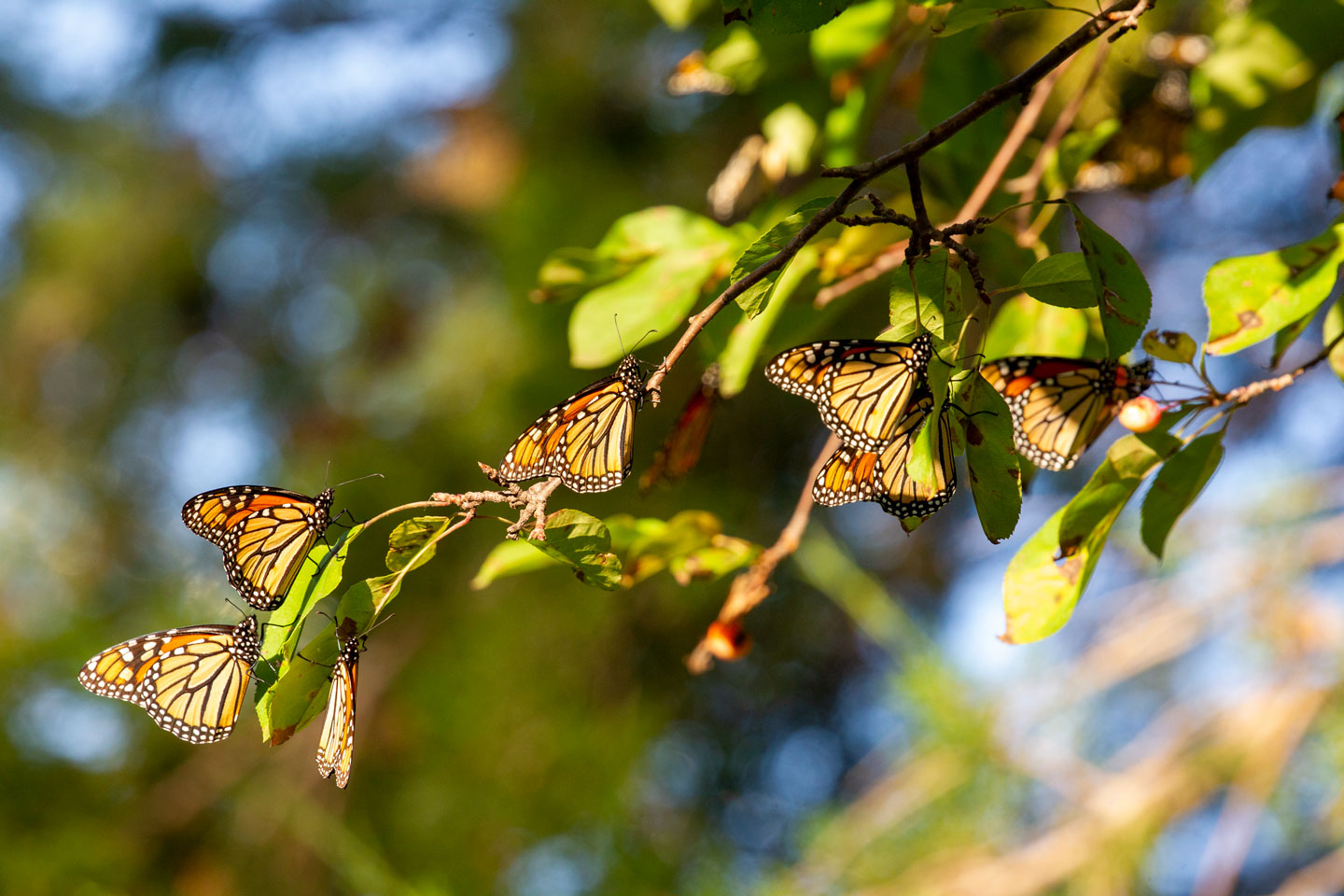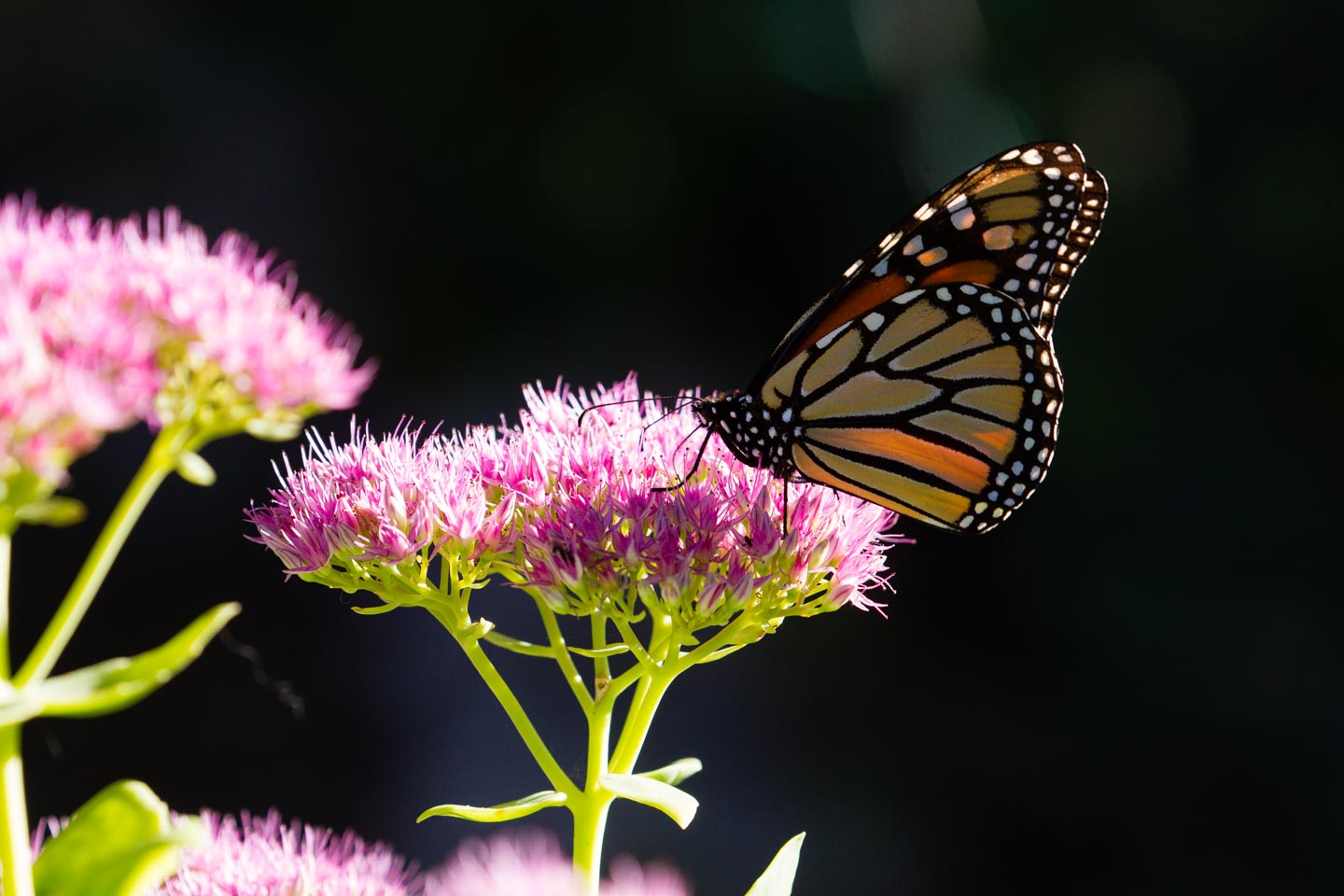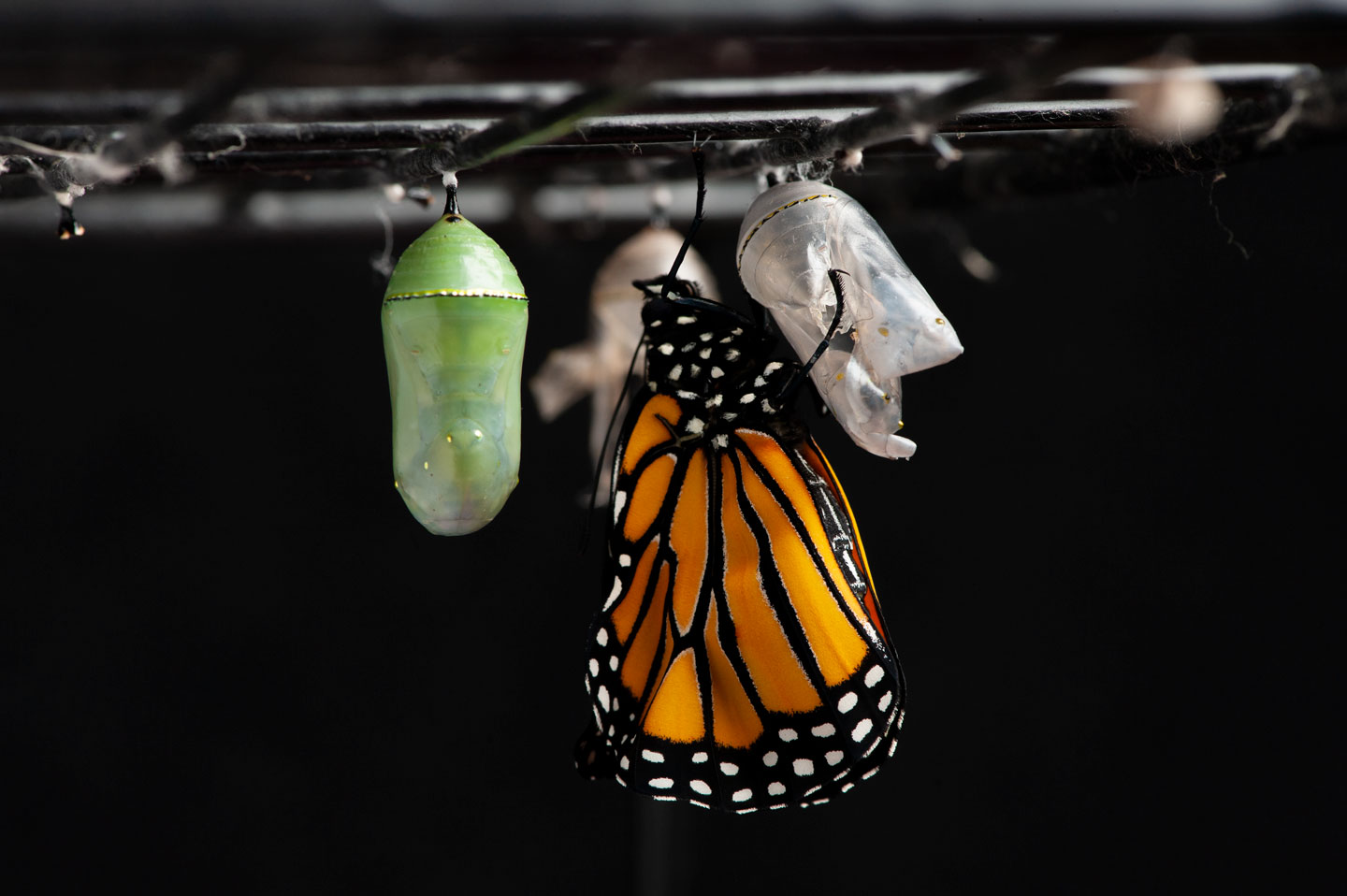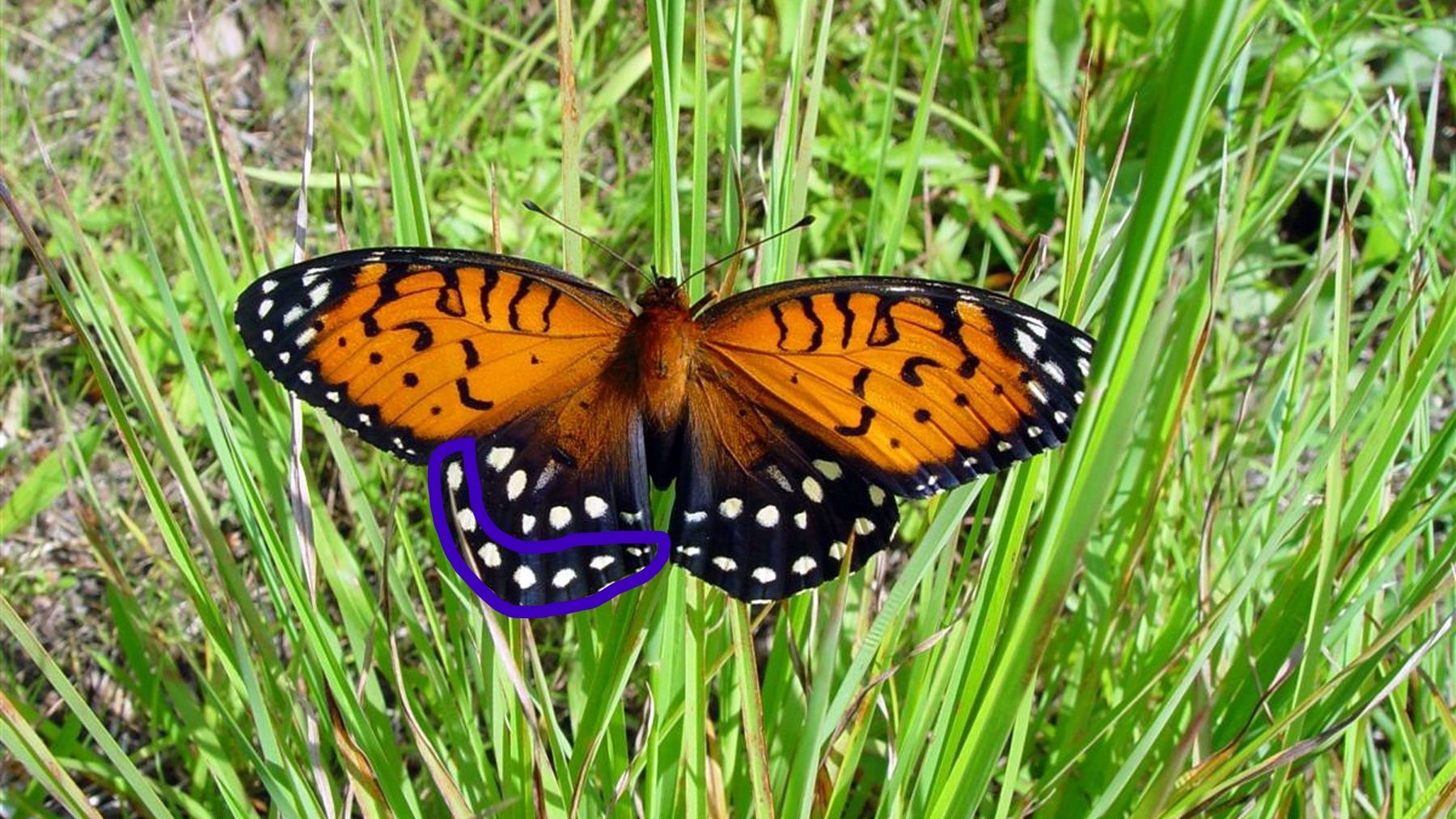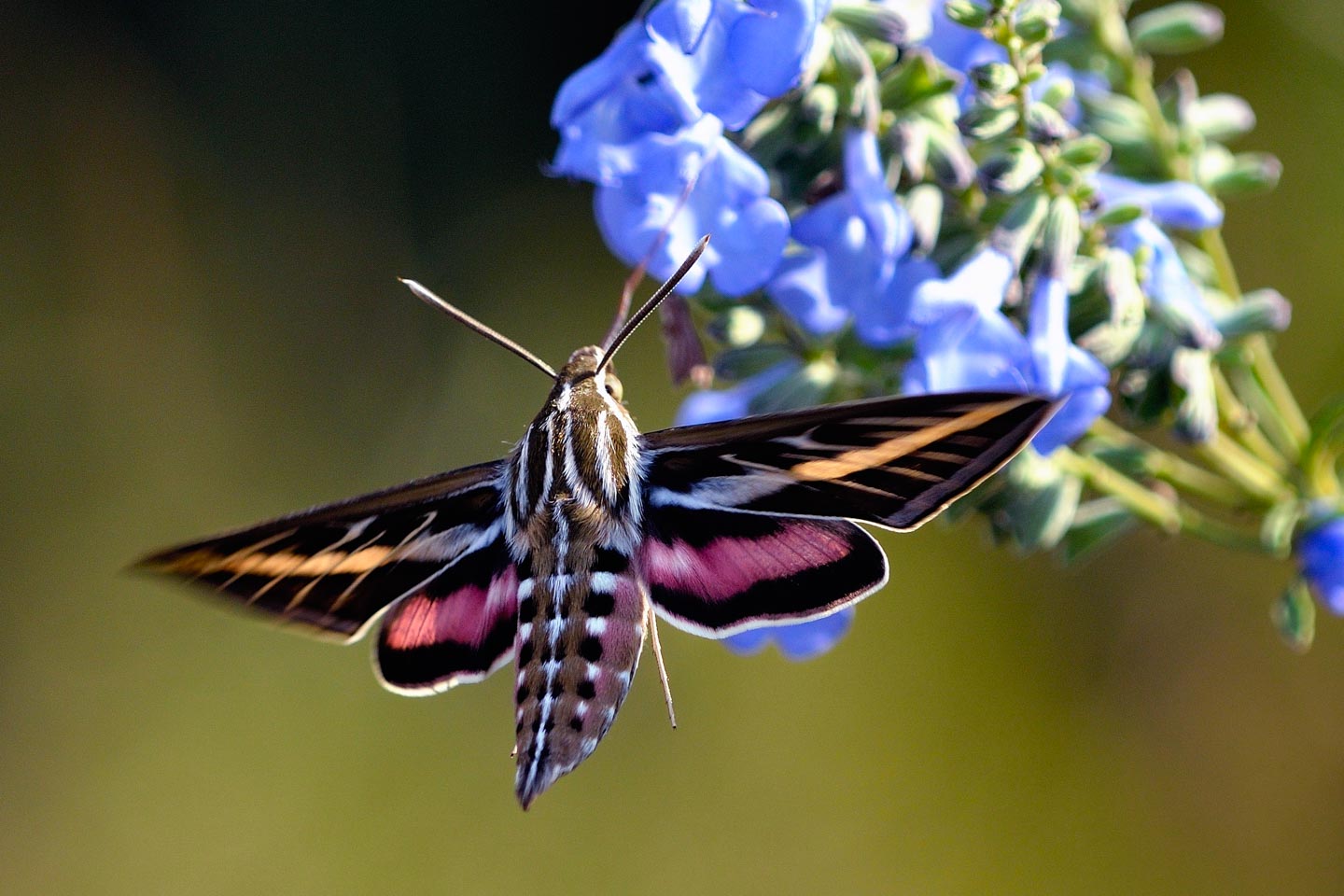Monarch butterfly
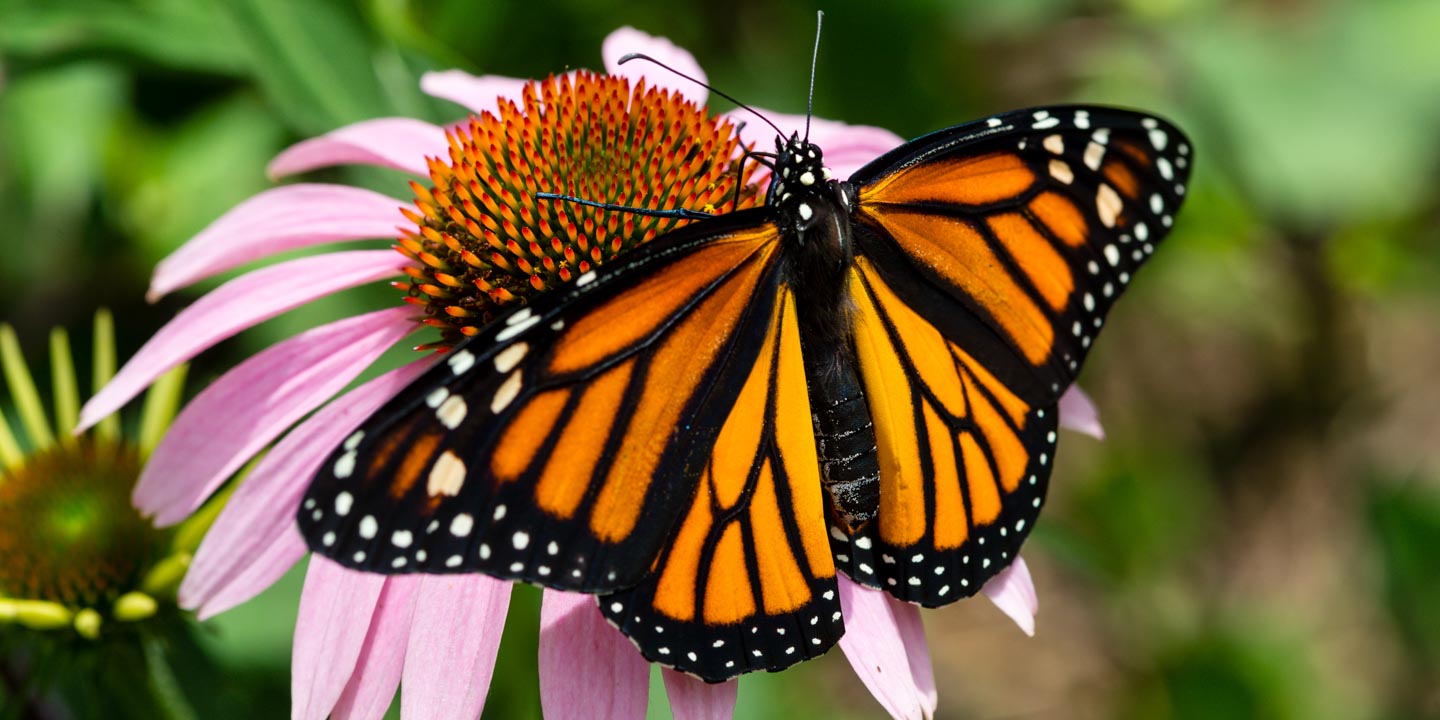
The monarch (Danaus plexippus) is one of our most iconic butterfly species. Monarchs undertake a migration of epic proportions that spans Canada, the United States and Mexico, and Nebraska lies in this very important travel corridor. The larvae (or caterpillars) feed on a variety of milkweed plants, and only milkweed will do. The adults nectar on and provide pollination services to many flowering plants.
Unfortunately, the population of these vibrant black, orange, and white butterflies has been in a state of serious decline, mostly because of loss of milkweed and habitat. Milkweeds have been significantly reduced in the Midwest because of the use of glyphosate herbicides. Widespread and increased use of neonicotinoids insecticides are also linked to the decline in monarch numbers. Another major impact is the loss of overwintering sites because of the cutting of the fir forests used by wintering monarchs. Drought associated with climate change is an additional threat.
The U.S. Fish and Wildlife Service recognized “threats, including loss of milkweed habitat needed to lay their [monarch] eggs and for their caterpillars to eat, are having a devastating impact on their populations and migration phenomenon.”
Nebraskans have been called to action to prevent a possible endangered or threatened status listing of monarchs. From many perspectives (effectiveness, financial, and otherwise), it is much better to take the necessary steps to avert a listing than to start addressing the problem after the fact.
Listing is costly for all involved and comes with heavy regulations; being proactive is the greater way to success. Stakeholders from the agricultural community, schools, non-governmental organizations, and the agencies challenged with conserving wildlife and wild spaces are working collaboratively to develop and implement a state conservation plan for monarchs and other pollinators.
How to get involved
At-risk Insect Pollinators
Conservation efforts for monarchs can help numerous other pollinators as well. There are at least 18 insect pollinators that are at-risk in Nebraska.
Monarch Life Cycle and Natural History
The monarch butterfly is found throughout North America, from Canada south to South America and the Caribbean, and may be the most widely recognized of all American butterflies with its distinct orange, black, and white wings.
Monarchs on a Mission

Monarchs across North America are disappearing. Pesticide and herbicide use, deforestation of their wintering grounds in Mexico and loss of milkweed in the United States are three important reasons for their decline.
The Nebraska Game and Parks Commission is dedicated to conserving all pollinator species – including monarchs. To advance monarch conservation, we need more quality land management, more in depth research and more education for all citizens.
“Monarchs on a Mission” aims to educate Nebraskans about monarchs and milkweed by inviting them to color a monarch of their own. The colored monarchs will be collected and used in an exhibit at the Nebraska State Capitol during Pollinator Week 2017.
The Monarchs on a Mission page includes FREE lesson plans, posters, and an invitation to receive a set of monarchs for your students to color!
Butterfly survey
There is an urgent need to track monarchs across their range over time to better understand and adjust conservation measures to be most effective. Thanks to the Wildlife Conservation Fund, a community science project is ongoing to monitor regal fritillaries, as well as the monarch butterfly, which is similar in size.
Nebraska’s Big Butterfly Count
Nebraska’s Big Butterfly Count is designed to determine the diversity of butterflies in Nebraska. Participants choose the location they would like to survey and record butterfly data from May through September. The results are then used to establish baseline data of the diversity of butterflies in the state, distribution of species, and help inform butterfly-related conservation.
Milkweed Tracker
Register your site with the app HabiTally if you are managing your site for pollinators, if you have recently restored a grassland that has diverse flowering plants, have recently added milkweed or planted a garden to help monarchs and pollinators. HabiTally was developed by Bayer, The Climate Corporation, and Iowa State. The app is easy to use and the data are fed directly into in the Monarch Conservation Database, one of the primary sources of data for the listing decision of the monarch butterfly.
Gardening for Monarchs
Monarch gardening is a very easy and rewarding activity and can even be completed in something as small as a flower pot! Although the recommended size of a monarch garden measures at least 100 square feet, plants and flowers can be incorporated into any mini-habitat in your garden, including border plants along your vegetable gardens.
Land Management for Monarchs and Pollinators
Involvement by many people is the only way to conserve migration and breeding habitat for monarchs, avert an endangered listing of the species, and prevent the decline of other pollinators.
Create a Monarch Waystation
Monarch waystations are areas that provide all of the necessary resources for monarchs.
Mayors’ Monarch Pledge
One way you can help monarchs is to bring attention to the Mayors’ Monarch Pledge. Through the pledge, mayors will encourage sustainable practices to their city workers, promote native vegetation for public gardens, and change or remove detrimental ordinances. The instructions are straightforward and can be completed at www.nwf.org/MayorsMonarchPledge. We have provided a template for how to complete the pledge. Some parts can be completed before contacting your mayor, and mayors might be more likely to participate if the process is already started.
Donate to the Wildlife Conservation Fund
Since 1984, tax deductible donations to the Nebraska Wildlife Conservation Fund have helped the thousands of species that call Nebraska home.
Nebraska Monarch and Pollinator Conservation Plan
In order to develop an effective conservation strategy for monarchs and other insect pollinators, a team for this planning project reached out to stakeholders with the goal of being all-inclusive. Input weaved into this plan came primarily from conservation practitioners, government organizations, non-government organizations, agricultural groups, businesses, and educators who met to express their ideas and concerns at a summit in Lincoln, Nebraska in February 2016.
Research for Pollinators
Although international research regarding monarchs and their needs has been underway for decades, there is still much to learn about how to help monarchs and other pollinators find the most suitable habitat locally in Nebraska.
Help plant milkweed along the Cowboy Trail
Volunteers in towns along the Cowboy Trail are invited to support monarch butterfly conservation by helping the Nebraska Game and Parks Commission plant milkweed seedlings on the trail.
Other resources
- For information on planting milkweed and butterfly gardens, as well as for information about the monarch’s life cycle, migration, and conservation, please visit Monarch Watch.
- Learn more about all Nebraska’s butterflies

